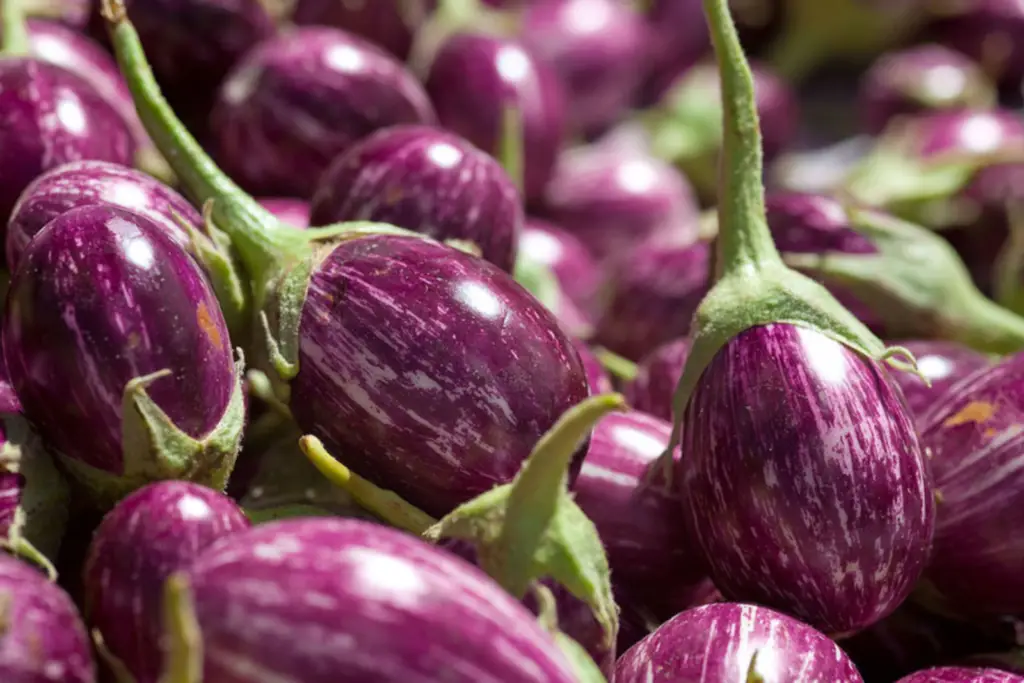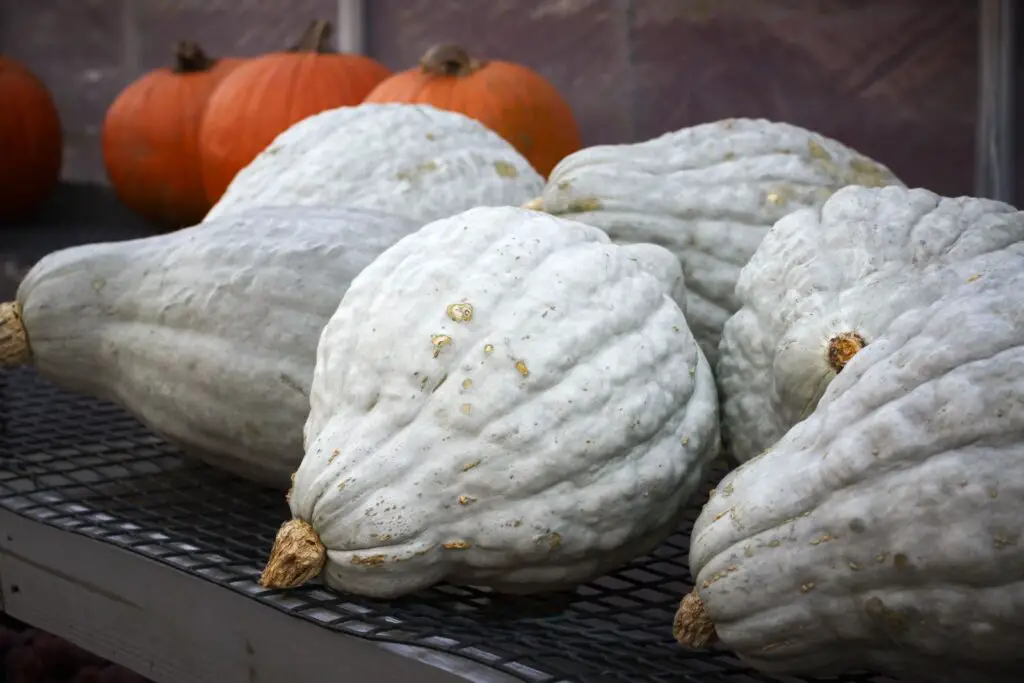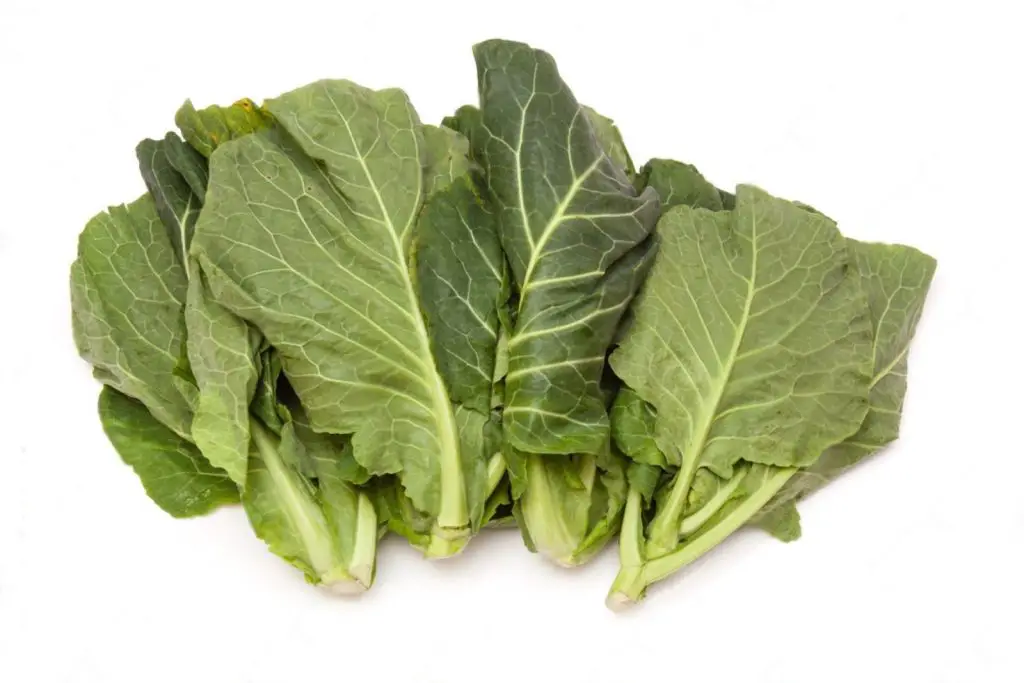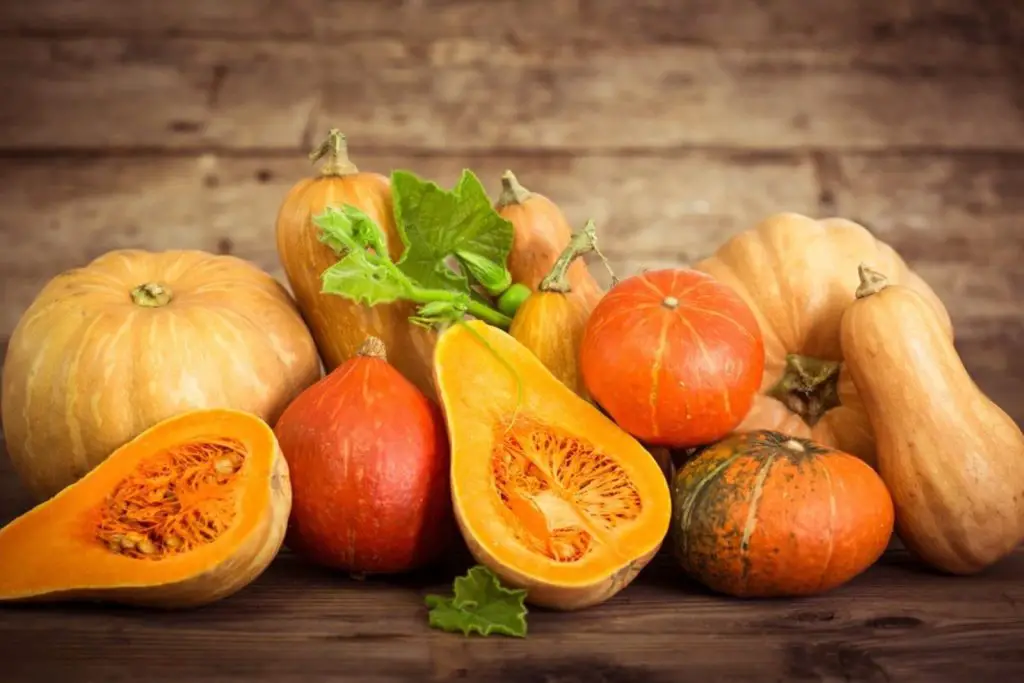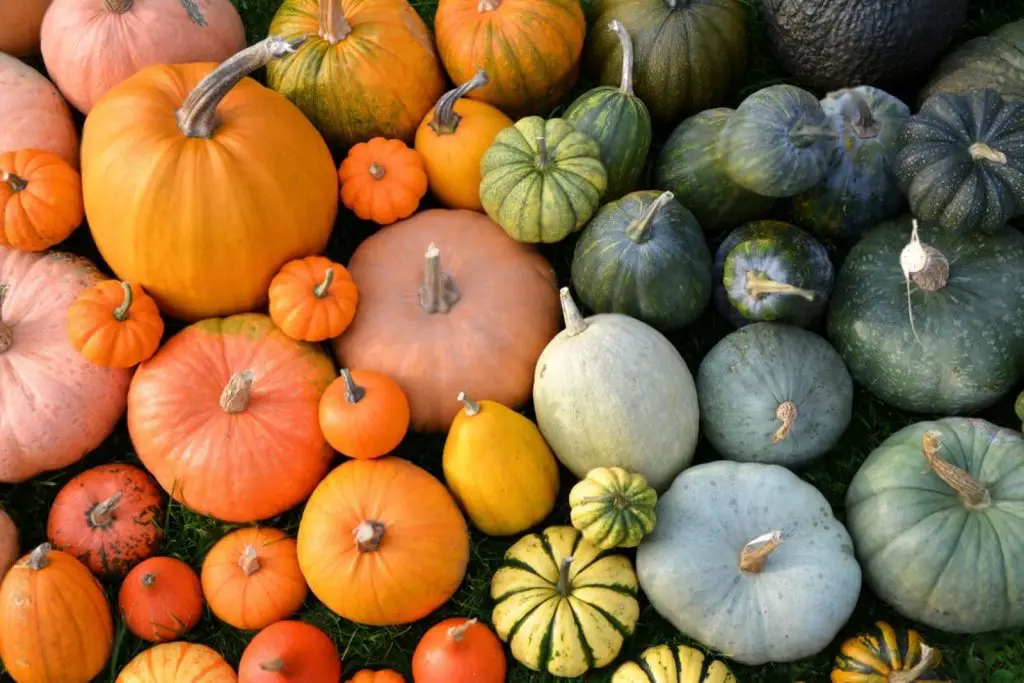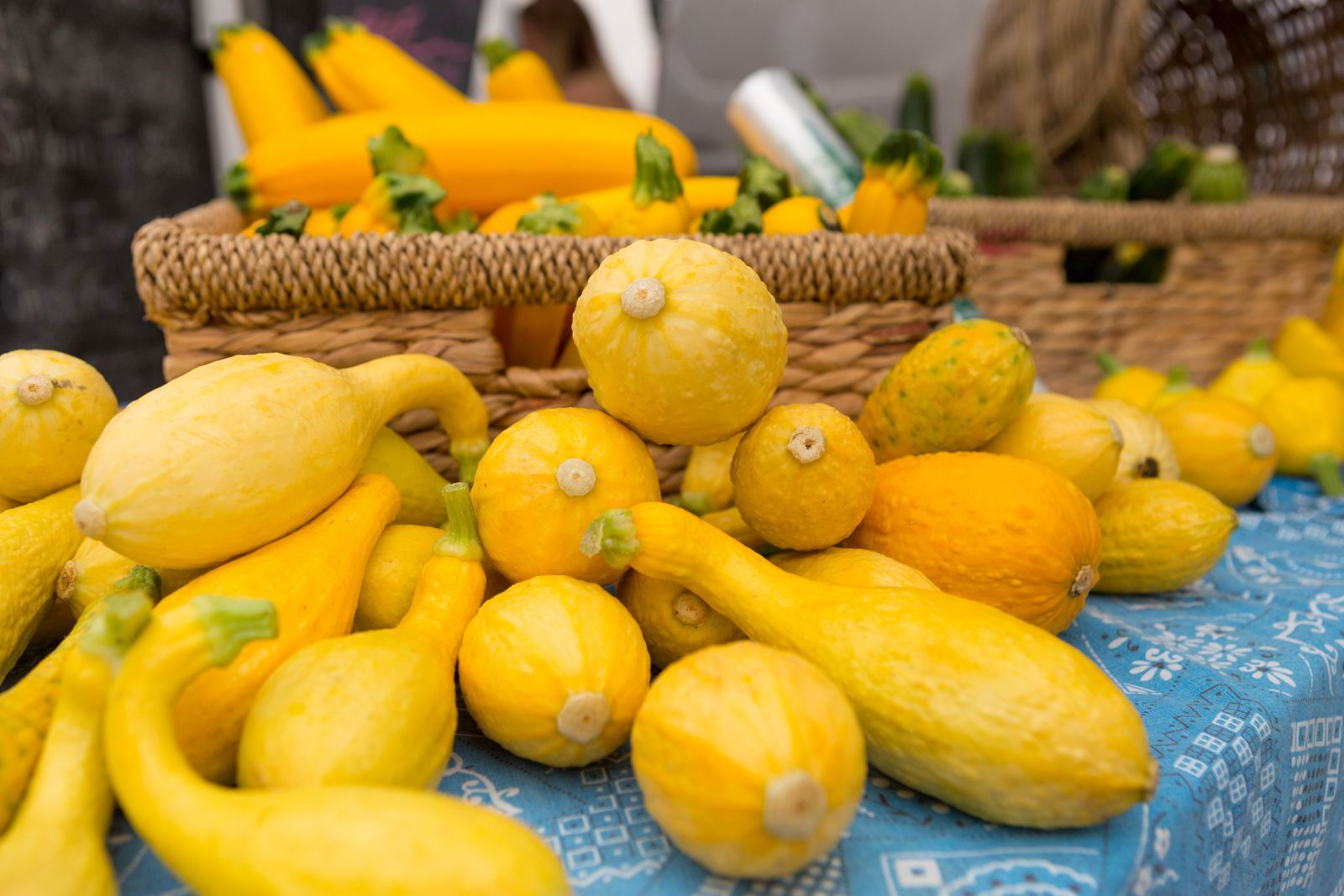
Crookneck squash is a delightful summer vegetable known for its vibrant yellow color and mild, buttery flavor. These squashes are a versatile addition to various dishes and can be enjoyed sautéed, grilled, or baked. However, when the summer season ends and the harvest is bountiful, freezing crookneck squash is an excellent way to ensure you can savor its goodness throughout the year. This guide will walk you through the simple steps of freezing crookneck squash, preserving its texture and taste for future culinary delights.
Here’s a comprehensive guide on how to freeze crookneck squash:
- Step 1: Select Fresh Crookneck Squash
- Step 2: Wash and Trim the Squash
- Step 3: Slice or Dice the Squash
- Step 4: Blanch the Crookneck Squash
- Step 5: Drain and Dry the Squash
- Step 6: Arrange the Squash for Freezing
- Step 7: Flash-Freeze the Crookneck Squash
- Step 8: Package and Seal the Squash
- Step 9: Label and Date the Packages
- Step 10: Store in the Freezer
Step 1: Select Fresh Crookneck Squash
Selecting the right crookneck squash is the essential first step in ensuring a successful and delicious frozen batch. The quality of the squash you choose will significantly impact the flavor and texture of the final product. Here’s a closer look at why selecting fresh and ripe crookneck squash is crucial:
- Flavor Preservation: Fresh crookneck squash at its peak ripeness is bursting with flavor. The sugars are developed to their fullest potential, resulting in a sweet and mildly nutty taste. Freezing squash that is past its prime may lead to a loss of flavor intensity.
- Texture Matters: Ripe crookneck squash is firm and has a pleasant crunch when you bite into it. As the squash ages, it can become softer and develop a mushy texture. Choosing squash at its freshest ensures that it maintains its desirable crispness even after freezing and thawing.
- No Bruises or Blemishes: Inspect each squash carefully to ensure they are free from bruises, blemishes, or any signs of decay. Damaged squash can release excess moisture during freezing, potentially causing ice crystals to form and affecting the overall quality of the squash.
- Vibrant Yellow Skins: Crookneck squash is known for its vibrant yellow skins, which are not only visually appealing but also an indicator of freshness. Avoid squash with dull or discolored skins, as this could be a sign of aging or improper storage.
- Peak Ripeness: Ideally, you should freeze crookneck squash when it’s at its peak ripeness. This is when the squash has reached full maturity and is at its best in terms of flavor, texture, and nutrient content. Overly mature squash may be less flavorful and slightly woody.
Step 2: Wash and Trim the Squash
Washing and trimming crookneck squash is a critical step in the process of freezing them. This step ensures that the squash is clean, free from contaminants, and prepared for blanching and freezing. Here’s a detailed explanation of why washing and trimming are essential:
- Remove Dirt and Debris: Crookneck squash, like many vegetables, can accumulate dirt, dust, or other debris on their skin during cultivation and transportation. Washing the squash under cool, running water helps remove these impurities, ensuring that you freeze clean and safe produce.
- Enhance Safety: Properly washing the squash reduces the risk of potential foodborne illnesses. Bacteria and pathogens can lurk on the surface of vegetables, so a thorough rinse is essential, especially if you plan to freeze the squash for an extended period.
- Maintain Flavor and Quality: By cleaning the squash, you prevent any unwanted flavors or off-putting textures that might result from contaminants or soil particles. This ensures that the natural, fresh taste of the squash is preserved during freezing.
- Skin Health: The skin of crookneck squash is edible and provides valuable nutrients and dietary fiber. By washing and not peeling the squash, you retain these beneficial components, contributing to a more nutritious end product.
- Uniform Cooking: Trimming off both ends of the squash is not just for aesthetics. It also helps with the blanching process. The ends of the squash can be tougher and may require longer blanching times to achieve the desired texture. Trimming ensures uniform cooking and freezing.
To wash and trim crookneck squash effectively, follow these steps:
- Hold each squash under cool, running water.
- Gently scrub the skin with a vegetable brush or your hands to remove any dirt or residues.
- Pay extra attention to crevices and the areas around the stem.
- After washing, use a clean knife to trim off both ends of the squash, which are usually the stem and blossom ends.
- Discard the trimmed ends in your compost or dispose of them appropriately.
Is it necessary to peel crookneck squash before freezing?
Peeling crookneck squash before freezing is not necessary. The skin is edible and contains valuable nutrients, so it can be left intact if desired. However, peeling may be preferred if you want a smoother texture in recipes where the skin’s texture might be noticeable, such as in soups or purees.
Step 3: Slice or Dice the Squash
When preparing crookneck squash for freezing, you have the option to either slice it or dice it into bite-sized pieces. The choice between these two methods depends on your culinary preferences and how you intend to use the frozen squash. Here’s an explanation of each method and why you might choose one over the other:
Slicing:
Slicing crookneck squash involves cutting it into thin, round discs. This method offers versatility in how you can use the frozen squash:
- Versatility in Recipes: Sliced crookneck squash is incredibly versatile and can be used in a wide range of recipes. You can sauté them with garlic and herbs, add them to stir-fries, or layer them in casseroles and gratins.
- Easy to Handle: Slices are easy to work with, and they cook relatively quickly. This makes them a convenient choice for dishes where you want the squash to retain some firmness and texture.
- Uniform Cooking: Slicing ensures that the squash pieces are of a consistent thickness, promoting even cooking during the blanching process and when used in recipes.
Dicing:
Dicing crookneck squash involves cutting it into small, bite-sized cubes. This method is particularly useful for certain dishes and cooking techniques:
- Specific Dishes: Diced squash works well in dishes where you want the pieces to blend in with other ingredients, such as soups, stews, and sauces. The smaller size allows for a more integrated flavor.
- Faster Cooking: Smaller pieces of squash tend to cook more quickly than larger slices. This can be advantageous when you want to reduce cooking time in recipes.
- Blanching Efficiency: Diced squash blanches efficiently as the smaller pieces heat through more rapidly, ensuring that they reach the desired level of tenderness without overcooking.
Choosing the Method:
The choice between slicing and dicing crookneck squash ultimately depends on your culinary needs and preferences. If you’re looking for versatility and plan to use the squash in a variety of dishes, slicing is the way to go. On the other hand, if you have specific recipes in mind that call for diced squash, or if you want to expedite cooking times, then dicing is the better option.
Regardless of your choice, remember to maintain uniformity in the size of the slices or cubes to ensure even blanching and freezing. Consistency in size will help you achieve the best results when you eventually incorporate the frozen squash into your meals.
Step 4: Blanch the Crookneck Squash
Blanching is a pivotal step in the process of freezing crookneck squash. This technique involves briefly immersing the squash slices or dice in boiling water, followed by rapid cooling in ice water. Here’s why blanching is essential and how it contributes to preserving the color, texture, and flavor of the squash:
- Preserving Color:
Blanching serves to lock in the vibrant yellow color of crookneck squash. The high heat breaks down enzymes that can cause color changes and deterioration in the vegetable over time. Without blanching, the squash may develop an unappetizing brownish hue during freezing and storage.
- Texture Maintenance:
Blanching briefly cooks the squash, making it slightly tender while preserving its crispness. This step is crucial because it inactivates enzymes that can lead to texture changes, such as mushiness, during freezing. When you blanch and cool the squash promptly, you ensure that it retains its desirable texture, whether you choose to use it in a stir-fry or a casserole.
- Flavor Protection:
Blanching helps lock in the natural flavors of the squash. By stopping enzymatic reactions that can lead to flavor deterioration, you ensure that the frozen crookneck squash maintains its delightful taste when used in various dishes later on.
- Enzyme Inactivation:
The brief exposure to boiling water during blanching is essential for inactivating enzymes that can continue to cause changes in the squash’s color, flavor, and texture even when it’s frozen. These enzymes, if not deactivated, can lead to the degradation of the vegetable’s quality over time.
Here’s a step-by-step guide on blanching crookneck squash:
- Boil Water: Begin by bringing a large pot of water to a rolling boil. You’ll need enough water to fully submerge the squash slices or dice.
- Prepare Ice Water: While the water is heating, fill a large bowl with ice water. This will be used to rapidly cool the blanched squash and halt the cooking process.
- Blanch the Squash: Carefully place the crookneck squash slices or dice into the boiling water. Be sure not to overcrowd the pot; blanch in batches if necessary. Let them cook for about 2-3 minutes or until they become slightly tender. The timing may vary slightly depending on the size of the pieces, so keep a close eye on them.
- Cool in Ice Water: Using a slotted spoon or tongs, quickly transfer the blanched squash to the bowl of ice water. This step is crucial in stopping the cooking process immediately and preserving the squash’s color, texture, and flavor.
Can I freeze crookneck squash without blanching it first?
Blanching is recommended to preserve the quality of crookneck squash during freezing. It helps maintain color, texture, and flavor. However, you can freeze it without blanching, but be aware that the squash may not retain its optimal quality as long.
Is it safe to reuse the blanching water for other cooking purposes?
It’s generally not recommended to reuse the blanching water for other cooking purposes due to the release of enzymes and potential contaminants from the vegetables. It’s safer to discard the blanching water and use fresh water for cooking other dishes.
Step 5: Drain and Dry the Squash
After blanching crookneck squash, it’s essential to properly drain and dry them before moving on to the freezing process. This step might seem like an extra precaution, but it plays a crucial role in preserving the quality of the frozen squash. Here’s why draining and drying are so important:
- Preventing Freezer Burn:
One of the main reasons for draining and drying blanched squash is to prevent freezer burn. Freezer burn occurs when moisture on the surface of the food freezes and forms ice crystals. These ice crystals can dehydrate the food, leading to changes in texture, flavor, and overall quality. By removing excess moisture, you reduce the risk of freezer burn and ensure that your frozen crookneck squash retains its freshness.
- Minimizing Ice Formation:
Excess moisture can lead to the formation of large ice crystals on the surface of the squash. These ice crystals can negatively impact the texture of the squash, making it mushy or grainy when thawed and cooked. Thoroughly draining and drying the squash helps minimize ice formation and maintain a desirable texture.
- Preventing Clumping:
If squash pieces are frozen together with moisture on their surfaces, they can become stuck or clump together in the freezer. This can make it difficult to remove individual portions when you’re ready to use them. Properly drying the squash before freezing ensures that they remain separate and easy to portion out.
- Optimal Quality:
Removing excess moisture not only prevents freezer-related issues but also ensures that the squash retains its optimal quality. Dry squash is less likely to develop off-flavors or odors that can sometimes occur during long-term freezer storage.
Here’s how to drain and dry blanched crookneck squash:
- Colander: Place the blanched squash in a colander or sieve over the sink or a large bowl. Allow them to drain for a few minutes to let excess water drip away.
- Pat Dry: After draining, gently pat the squash slices or dice dry with a clean kitchen towel or paper towels. Be gentle to avoid crushing or damaging the pieces.
- Air Drying (Optional): If you have the time, you can also spread the drained squash on a clean kitchen towel or paper towels in a single layer and let them air dry for a little while. This additional step can further reduce moisture.
- Ensure Dryness: Check to make sure that the squash is as dry as possible before proceeding to the next steps in the freezing process.
Step 6: Arrange the Squash for Freezing
After blanching and drying the crookneck squash, the next crucial step is to arrange them properly for freezing. This step involves spreading the blanched and dried squash pieces in a single layer on a baking sheet. The arrangement may seem like a simple task, but it plays a significant role in ensuring the quality of your frozen squash. Here’s why it’s important and how it contributes to the freezing process:
- Preventing Clumping:
When you place the squash pieces in a single layer on a baking sheet, you create space between them. This space prevents the pieces from sticking together as they freeze. Without proper spacing, the frozen squash can become one large clump, making it challenging to separate and use individual portions when needed.
- Even Freezing:
Properly arranged squash ensures that each piece freezes evenly. When squash pieces are touching or piled on top of each other, it can lead to uneven freezing, resulting in variations in texture and quality. By maintaining a single layer with adequate spacing, you promote uniform freezing, preserving the desired texture and flavor.
- Ease of Portioning:
Arranging the squash on a baking sheet also makes it easier to portion out the frozen pieces later. Once they are individually frozen, you can transfer them to storage containers or bags without any hassle. This convenience is especially valuable when you only need a portion of the squash for a specific recipe.
- Preventing Moisture Buildup:
Spacing the squash pieces on a baking sheet helps prevent moisture buildup between the pieces during freezing. Excess moisture can lead to ice formation and potential freezer burn. Adequate spacing allows air to circulate around the squash, assisting in moisture removal.
- Maximizing Storage Space:
By arranging the squash in a single layer, you optimize the use of freezer space. Individual pieces take up less room than a clump of frozen squash, allowing you to store more in your freezer and efficiently use the available space.
Here’s how to arrange the blanched and dried crookneck squash for freezing:
- Prepare a clean, dry baking sheet. You can line it with parchment paper or a silicone baking mat for easy removal of frozen squash.
- Spread the blanched and dried squash pieces on the baking sheet in a single layer. Ensure that they are not touching or overlapping. Leave a small gap between each piece.
- If you have a large quantity of squash, you may need to use multiple baking sheets or freeze them in batches.
- Place the baking sheet(s) in the freezer. Allow the squash to freeze for about 1-2 hours or until they are firm and individually frozen. This process, known as flash-freezing, ensures that the pieces remain separate.
Step 7: Flash-Freeze the Crookneck Squash
Flash-freezing is a crucial step in the process of freezing crookneck squash. This technique involves rapidly freezing the individual pieces on a baking sheet before transferring them to long-term storage containers. Flash-freezing offers several benefits and plays a vital role in preserving the quality of your frozen squash. Here’s why flash-freezing is essential and how it contributes to the overall success of the freezing process:
- Preventing Clumping:
The primary purpose of flash-freezing is to prevent the squash pieces from clumping together during long-term storage. When you place the blanched and dried squash in the freezer on a baking sheet, the individual pieces freeze quickly, maintaining their separation. Without flash-freezing, the pieces can stick together and become difficult to portion out when you need them for recipes.
- Maintaining Texture and Quality:
Flash-freezing ensures that each piece of squash freezes uniformly and quickly. This rapid freezing helps preserve the texture and flavor of the squash, minimizing the formation of large ice crystals that can affect the vegetable’s overall quality. When you use flash-frozen squash in recipes, you’ll enjoy a consistent and appealing texture.
- Ease of Portioning:
Flash-frozen squash is easy to portion out because the individual pieces are frozen separately. Whether you need a small amount for a side dish or a larger quantity for a main course, you can easily remove the desired number of pieces without thawing the entire batch.
- Preventing Moisture Buildup:
Flash-freezing minimizes moisture buildup between the squash pieces during freezing. Adequate airflow around each piece helps remove excess moisture, reducing the risk of ice formation and potential freezer burn.
- Optimizing Freezer Space:
By arranging the squash in a single layer for flash-freezing, you maximize the use of available freezer space. Individual pieces take up less room than a clump of frozen squash, allowing you to efficiently utilize your freezer’s capacity.
Here’s how to perform flash-freezing for crookneck squash:
- After arranging the blanched and dried squash pieces in a single layer on a baking sheet, place the baking sheet(s) in the freezer.
- Allow the squash to freeze for approximately 1-2 hours or until they are firm and individually frozen. The exact freezing time may vary depending on your freezer’s temperature and the size of the pieces.
- Check the squash periodically to ensure they are fully frozen. They should be firm to the touch and not easily stick together.
- Once the squash is flash-frozen, you can proceed to the final step of packaging and sealing them in airtight containers or resealable freezer bags.
Step 8: Package and Seal the Squash
Once you’ve flash-frozen the crookneck squash, the next crucial step is to package and seal them properly for long-term freezer storage. This step ensures that the squash remains in optimal condition, preserving its flavor and texture until you’re ready to use it in your recipes. Here’s why packaging and sealing are essential and how they contribute to maintaining the quality of your frozen squash:
- Preventing Freezer Burn:
Proper packaging and sealing are essential for preventing freezer burn. Freezer burn occurs when moisture on the surface of the food evaporates and re-crystallizes, resulting in dehydration and a change in taste and texture. By sealing the squash in airtight containers or bags, you create a barrier that prevents air and moisture from coming into contact with the squash, significantly reducing the risk of freezer burn.
- Maintaining Freshness:
Airtight packaging helps maintain the freshness of the squash. It keeps out unwanted odors from the freezer, ensuring that your frozen squash retains its natural flavor and doesn’t absorb any off-flavors from surrounding items.
- Preventing Clumping:
Properly sealed containers or bags also prevent the individual squash pieces from sticking together during freezing. This makes it easy to remove and use only the desired quantity without thawing the entire batch.
- Optimizing Storage Space:
Airtight packaging allows you to stack and store the frozen squash efficiently, maximizing the use of available freezer space. Well-sealed containers or bags keep the squash neat and organized.
- Long-Term Storage:
Airtight packaging is crucial for long-term storage. It helps protect the squash from freezer burn, which can occur over extended periods. When properly sealed, frozen crookneck squash can maintain its quality for several months.
Here’s how to package and seal crookneck squash for freezing:
- Select Freezer-Safe Containers or Bags: Choose airtight containers specifically designed for freezer use or heavy-duty resealable freezer bags. These are designed to withstand the cold temperatures and prevent air and moisture from permeating.
- Portion the Squash: Decide on the portion size you’ll need for your recipes. You can package the squash in meal-sized portions or in a way that suits your cooking needs.
- Transfer the Squash: Carefully transfer the individually frozen crookneck squash pieces into the chosen containers or bags.
- Remove Excess Air: For freezer bags, squeeze out as much air as possible before sealing. A vacuum sealer is an excellent tool for this purpose, as it can remove nearly all the air, ensuring maximum freshness and preventing freezer burn.
- Seal Tightly: Seal the containers or bags tightly to create an airtight seal. Make sure there are no gaps or openings that could allow air or moisture to enter.
Step 9: Label and Date the Packages
Labeling and dating your frozen crookneck squash packages might seem like a small, optional step, but it holds significant importance in ensuring the organization and quality of your frozen food. Here’s why labeling and dating are essential and how they contribute to a smoother and more efficient experience when using your frozen squash:
- Identification: Labeling each container or bag with the contents (crookneck squash) provides clear identification of what’s inside. This is particularly important when you have various frozen foods in your freezer. It allows you to quickly locate and access the specific item you need.
- Date of Freezing: Including the date of freezing on the label is crucial for tracking the age of your frozen squash. Different foods have different recommended storage durations in the freezer, and knowing the freezing date helps you adhere to these guidelines. It ensures that you use your frozen squash within the recommended time frame to maintain optimal quality and safety.
- Portion Size: If you’ve portioned your squash into specific serving sizes, noting the portion size on the label makes meal planning and preparation more convenient. It allows you to grab just the right amount of squash for your recipes, reducing waste.
- Cooking Instructions: If you have any special cooking instructions or reminders for using the frozen squash, such as recommended cooking methods or seasonings, you can include them on the label. This information can be particularly helpful when you’re in a hurry or trying to replicate a favorite recipe.
- First-In, First-Out (FIFO): Labeling and dating your frozen food packages enable you to practice the FIFO method. FIFO means using the oldest items first, ensuring that nothing gets forgotten or goes to waste in the freezer. By knowing when you froze your crookneck squash, you can prioritize its use and maintain an efficient food rotation system.
- Safety and Quality: Proper labeling and dating support food safety and quality. You can confidently assess the freshness of your frozen squash by referencing the date on the label, ensuring that it meets your culinary standards.
To label and date your crookneck squash packages:
- Use a permanent marker or freezer-safe labels.
- Write the contents (crookneck squash) clearly on the label.
- Include the date of freezing in a clear, easily readable format (e.g., Month/Day/Year).
- Optionally, note the portion size or any specific cooking instructions.
- Affix the label securely to the container or bag, ensuring it won’t become illegible or fall off during freezer storage.
Step 10: Store in the Freezer
The final step in the process of freezing crookneck squash is to place the properly packaged and labeled containers or bags in the freezer. This step is crucial for maintaining the quality and safety of your frozen squash. Here’s why storing your frozen squash correctly in the freezer matters and how it contributes to preserving its optimal condition:
- Maintaining Quality: Storing your crookneck squash in the freezer at the correct temperature is essential for preserving its texture, flavor, and nutritional value. Freezing at or below 0°F (-18°C) ensures that the squash remains in the best possible condition until you’re ready to use it.
- Preventing Spoilage: Freezing at low temperatures prevents the growth of spoilage microorganisms and the development of harmful bacteria. It keeps your squash safe to eat for an extended period.
- Avoiding Freezer Burn: Storing your squash in a well-organized manner in the coldest part of the freezer helps prevent freezer burn. Freezer burn occurs when moisture on the food’s surface evaporates and re-crystallizes. By maintaining the proper freezing temperature and ensuring the squash is well-sealed, you reduce the risk of freezer burn.
- Efficient Use of Space: Proper storage in the coldest part of the freezer allows you to make the most efficient use of your freezer space. It ensures that your frozen squash stays consistently frozen, contributing to its long-term quality.
Here’s how to store your frozen crookneck squash in the freezer:
- Choose the Coldest Part: Identify the coldest part of your freezer. This is typically toward the back and near the freezer coils. Placing your squash in this location helps maintain a stable and low freezing temperature.
- Organize Your Freezer: Ensure that the frozen squash packages are well-organized within the freezer. Avoid overloading the freezer, as this can obstruct airflow and lead to temperature fluctuations.
- Stack or Arrange Neatly: If you have multiple packages of frozen squash, stack them neatly to make the best use of available space. Keep them in a designated area to avoid disarray and facilitate easy access.
- Maintain the Temperature: Check and maintain the temperature settings of your freezer to ensure it stays at 0°F (-18°C) or lower. Periodic temperature checks help ensure that your squash remains properly frozen.
- FIFO Method: When accessing your frozen squash, practice the FIFO (First-In, First-Out) method. Use the oldest packages first to ensure that nothing goes to waste.
How long can crookneck squash last in the freezer?
Crookneck squash can last in the freezer for approximately 10 to 12 months when stored at or below 0°F (-18°C). Proper packaging, including airtight containers or freezer-safe bags, labeling, and maintaining consistent freezing temperatures, is crucial to ensure the squash maintains its quality and flavor throughout this storage period. After this time, while the squash may still be safe to eat, it may experience a decline in texture and flavor.
Other related questions
How do I defrost crookneck squash?
To defrost crookneck squash, transfer the frozen squash from the freezer to the refrigerator. Allow it to thaw in the refrigerator for approximately 24 hours or until it’s completely thawed. Alternatively, you can speed up the process by placing the frozen squash in a sealed plastic bag and submerging it in cold water, changing the water every 30 minutes until thawed. Avoid using hot water or microwaving as it can result in undesirable texture changes.
Can I use frozen crookneck squash directly in recipes without thawing?
Yes, you can use frozen crookneck squash directly in recipes without thawing if you’re incorporating it into dishes that require cooking or simmering. Keep in mind that it may take slightly longer to cook.
Can I refreeze crookneck squash?
It is generally not recommended to refreeze crookneck squash once it has been thawed. The freezing and thawing process can cause changes in texture and flavor, leading to a less desirable end product. To minimize food waste, it’s advisable to only thaw the amount of squash you intend to use in a single cooking session and consume it promptly.
How do I know if the crookneck squash has gone bad after being frozen?
Frozen crookneck squash that has gone bad may exhibit signs such as freezer burn, ice crystals, changes in color (e.g., turning brown or off-color), a mushy or soggy texture, or an unpleasant odor. Additionally, if you notice any unusual or off-putting odors, flavors, or the presence of mold or freezer-related damage, it’s best to discard the squash to ensure food safety. Proper labeling with the freezing date and adherence to recommended storage durations can help prevent the consumption of spoiled squash.
What are some recipes I can make with frozen crookneck squash?
Frozen crookneck squash can be used in a variety of recipes, such as soups, stews, casseroles, stir-fries, and even as a side dish. Its versatility makes it a valuable addition to your freezer for numerous culinary creations.
Can I freeze cooked crookneck squash, or is it better to freeze it raw?
You can freeze both raw and cooked crookneck squash. However, blanching raw squash before freezing is recommended for better preservation of its attributes. Cooked squash can also be frozen but may have a slightly different texture upon thawing.
Is it safe to freeze crookneck squash that has been stuffed or cooked with other ingredients?
Yes, it is safe to freeze crookneck squash that has been stuffed or cooked with other ingredients. However, proper packaging is essential. Wrap them tightly in plastic wrap or foil to prevent freezer burn and maintain their quality.

